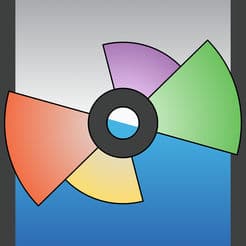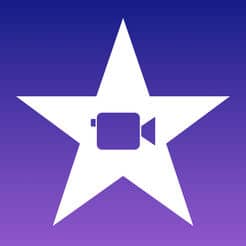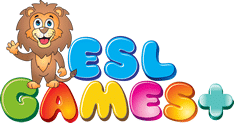
7 Ways to Teach English with Technology
Traditional pencil, paper and chalkboard teaching methods are no longer enough to captivate and educate the modern student.
In our modern world, technology can and should be used to make learning English more engaging and exciting.
Visual and audio media, online games, apps and more will grab the attention of your English Language Learner (ELL) students and save you time on lesson planning.
Read on for seven effective ways to spice up your English lessons using technology, and the benefits you and your ELL students will reap.
Contents
- 1. Use Apps
- 2. Listen to Podcasts
- 3. Play Online Games
- 4. Show Films and TV Programs
- 5. Take Your Class on a Virtual Field Trip
- 6. Teach with Smartboards
- 7. Access Language Learning Websites
- Why Technology Is an Effective Tool for ELLs
Download: This blog post is available as a convenient and portable PDF that you can take anywhere. Click here to get a copy. (Download)
1. Use Apps
Apps are simple and often free tools for reinforcing the topics you’re covering in your ELL classroom. You can also use them for warm-up and homework activities.
You can have your students use apps on their smartphones, or use tablets in the classroom if you’re able to.
 Quizlet: With Quizlet, you can create flashcards and interactive activities that help your students learn, review and practice grammar and vocabulary through interactive drills and exciting games. Your students can access the wide range of learning material on their Android and iOS devices.
Quizlet: With Quizlet, you can create flashcards and interactive activities that help your students learn, review and practice grammar and vocabulary through interactive drills and exciting games. Your students can access the wide range of learning material on their Android and iOS devices.


Find more of the best apps for ESL teachers here.
2. Listen to Podcasts
Podcasts are highly effective listening and comprehension tools for ELL students. They can also help students expand their vocabulary and learn to speak more naturally in both formal and informal settings.



There are podcasts for all different interests, ages and language levels. With such a wide selection, you can find a podcast to go along with practically any lesson topic!
Find a few more podcasts you can use in your ELL teaching here.
3. Play Online Games
Using games is an engaging way to teach and reinforce essential language skills and concepts. Games use rewards, which can make learning fun and competitive.
And playing games isn’t just for children: many teenagers and adults also enjoy games and will be excited to play them while learning English. With games, they can practice what they’ve learned without feeling like they’re doing more work.
 ESL Games World is your one-stop shop for English learning games. Here you’ll find both online and printable games for the whole spectrum of English learners.
ESL Games World is your one-stop shop for English learning games. Here you’ll find both online and printable games for the whole spectrum of English learners.- ESL Games Plus

- British Council has games for kids learning English and a couple addictive vocabulary games for
 ELLs of any age. These games pair well with the plethora of other online resources they provide to learn or teach English.
ELLs of any age. These games pair well with the plethora of other online resources they provide to learn or teach English.
Find more games to play with your ELL students here.
4. Show Films and TV Programs
Airing films and TV shows in the classroom is a wonderful way to expose your ELL students to native English speakers. The visual component also helps ELL students comprehend what’s being said.

FluentU’s authentic videos—like music videos, movie trailers, news segments and more—include interactive subtitles that help students learn new vocabulary and better understand what they’re watching.
You can hover over any word to show a quick definition or click on it for a more in-depth breakdown of its meaning and how it’s used. You can even add the word to a vocabulary list and then quiz your students later on all the new words they’ve learned.

By combining your movie and TV lessons with FluentU, you can create a fully immersive learning experience.
You can also enhance your video lessons with worksheets that will turn pure entertainment into productive language learning.
5. Take Your Class on a Virtual Field Trip

Expose your students to other cultures and countries by taking virtual tours of famous places around the world with AirPano. Or go on a tour of the Louvre to practice adjectives and art-related vocabulary.
These tours are incredibly visual and provide a great opportunity for students to practice describing what they see.
Before going on your field trip, provide your students with a worksheet of questions they’ll have to answer at the end to encourage careful listening and active engagement. You may even ask them to write a short report about what they witnessed at the end of the lesson or as homework.
6. Teach with Smartboards
Smartboards are interactive whiteboards that can be used to enhance any type of educational setting. They allow teachers to incorporate pictures, diagrams and other types of resources into their classroom notes.
For English teachers, smartboards are especially useful for turning language lessons into hands-on learning experiences. If you’re able to convince your school to get one, or if you already have one available, they’re a must-use tool!
Here are a few ways to use a smartboard in your ELL classroom:
- Brainstorming sessions: Whenever you want to conduct a brainstorming session with your students, a smartboard can help. You can organize words and phrases in a chart, list or mind map. To make it more interactive, have your students come up and add their own ideas or examples.
- Review grammar and vocabulary: A smartboard allows you to keep a list of vocabulary or grammar structures to one side of the board without the risk of someone erasing it. With the rest of your space, you can go over examples or more detailed explanations of how to use them.
- Display reading or video material: Instead of struggling with an outdated projector, smartboards make it easy to display reading material or media in an interactive way. You can point, click, highlight text, and drag and drop items right from the board.
7. Access Language Learning Websites
There’s a wealth of worksheets, activities, lessons plans and other types of ELL resources for teachers available online. Many of these resources are even free!
As an ELL teacher, utilizing language learning websites will save you so much time in your classroom planning.
- E


- Using English is
 another useful site is for both English teachers and students. You’ll find an impressive selection of quizzes, tests, handouts, lesson plans and reference materials to use in your ELL classroom here.
another useful site is for both English teachers and students. You’ll find an impressive selection of quizzes, tests, handouts, lesson plans and reference materials to use in your ELL classroom here.
Find more of the best websites for you and your students here.
Why Technology Is an Effective Tool for ELLs
- Students can progress and practice at different paces. Technology helps you create a learning environment that’s conducive for all different levels of English learners. The ability to digitally track your students’ progress, strengths and weaknesses is also a useful tool when planning lessons and activities for your class.
- It provides more opportunities to reinforce new language skills. Learning and mastering a new language takes a lot of repetition. Technology makes it easier for students to practice what they’ve learned in the classroom.
- Students can learn through real-life situations. Technology provides so many ways to expose students to real-life situations in English. This can be through movies, television shows, video clips and even face-to-face interactions with apps like Skype and FaceTime.
- Challenging new concepts can be presented visually and aurally. Students can only get so much from textbooks and worksheets. Using technology will help hold their attention and allow you to explain difficult concepts in easier-to-understand ways with visual and audio resources.
- Technology makes the lessons more engaging. Technology can spice up your lessons, especially for the more dull parts of learning English (hello, grammar). And your students are more likely to retain the information if they are genuinely engaged and inspired while learning.
The ability to converse in the English language is a gift. As an ELL teacher, you get to share it with the world!
What better way to present the gift of language than by using technology for ELL students?
Download: This blog post is available as a convenient and portable PDF that you can take anywhere. Click here to get a copy. (Download)


